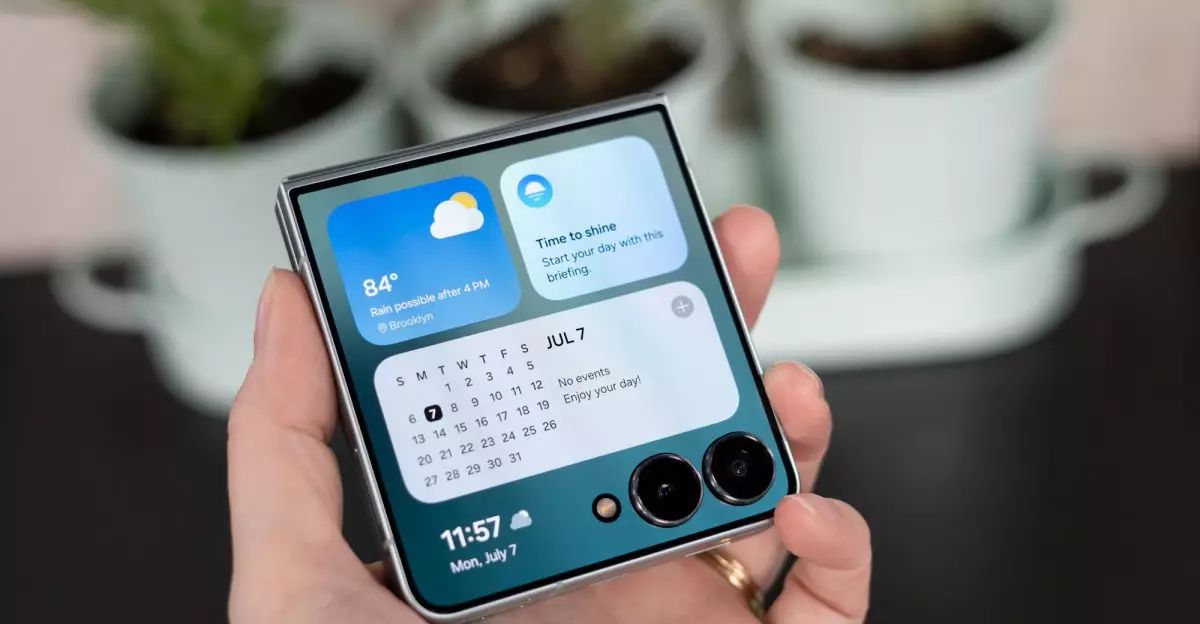The rise of foldable and flip phones signals a bold shift in how we envision mobile technology. These devices promise novelty, compactness, and a nostalgic return to an era where form met function in interesting ways. However, beneath the sleek surfaces lies a fundamental challenge that manufacturers have yet to fully overcome: ensuring robust durability against everyday threats like dust, dirt, and wear. The industry’s current focus on innovation often overlooks one critical aspect—the inner mechanics’ vulnerability to environmental factors.
Traditional smartphones have largely settled into a pattern of water and dust resistance aligned with their IP ratings. Everyone understands the risks of dust ingress on slab phones—the tiny particles that can penetrate ports and openings gradually impair performance. But with foldables and flip models, the problem becomes exponentially trickier. The very mechanisms that enable these devices to fold and unfold—hinges, creases, and internal screens—are susceptible to the tiniest intrusions. Dust particles smaller than a millimeter can find their way in through minimal gaps, gradually exacerbating issues like screen bulging, hinge failure, or complete device breakdown.
Despite incremental advancements, this vulnerability remains largely unaddressed. Manufacturers like Samsung and Motorola claim “water and dust resistance,” but these claims are often limited to superficial protection. For foldables, especially where the internal screen is a critical component, dust ingress can spell catastrophe. The issue is compounded by the design trade-offs made to enhance aesthetic appeal and foldability—these same design choices often produce micro-gaps and creases that serve as entry points for hazardous particles. The irony is stark: as these devices become more sophisticated, their internal components tend to become more fragile and exposed.
The Myth of Rugged Foldables: A Pipe Dream?
The promise of creating a foldable phone that’s truly resistant to dust and water—the coveted IP68 standard—has been more myth than reality. While thorough water resistance is increasingly common, dustproofing remains elusive, especially in foldable models. The industry’s attempted solutions, like adding seals or advanced coatings, have yet to produce a foldable with a truly dustproof IP rating.
The skepticism isn’t unwarranted. A device with a seamless, foldable design inherently involves moving parts and creases—features that inherently create opportunities for particles to slip inside. Even with better seals, the mechanical complexity makes a perfect dustproof environment challenging to achieve. For users, this translates into a risk: using a foldable in environments with dust or sand can result in performance degradation or outright damage. It’s a question of when, not if, dust will settle into the mechanisms.
There’s a palpable frustration among consumers and critics alike. Why, despite technological leaps, are foldables still vulnerable? The answer is rooted in engineering compromise. Achieving flexibility and durability simultaneously pushes design boundaries to their limits. Every dust particle that infiltrates can erode internal components, compromise hinge mechanics, or ruin the delicate foldable screens. And unfortunately, these issues lie beneath the consumer’s radar, often surfacing after months or even weeks of normal use.
Challenges and Realistic Expectations for Future Foldables
The industry’s pursuit of a fully dust-proof foldable is a high-stakes game riddled with technical hurdles. According to industry insiders, achieving an IP68 rating on foldable phones demands breakthroughs in hinge sealing, miniaturized gaskets, and protective layering—all of which are complex and costly. As of now, no flagship foldable offers this level of protection, and manufacturers are cautious in promising capabilities they cannot substantiate.
I’ve personally questioned industry leaders on this front. Samsung’s minimal acknowledgment of the difficulty in achieving dustproof standards reveals just how hard this truly is. The industry whispers about upcoming foldable models boasting higher resistance—yet these rumors often fade when details emerge. It’s almost as if the “dustproof foldable” remains an aspirational goal, not an imminent reality.
This reality should temper consumer expectations. Buying a foldable device involves accepting trade-offs—like increased vulnerability to environmental factors that traditional phones handle more adeptly. Until engineering can masterably seal the intricate moving parts, the risk and inconvenience of dust-related damage persist. Despite the allure of innovation, practicality must catch up.
Where Does This Leave Consumers and Innovators?
For consumers, this conundrum impacts decision-making. The fascination with flip and fold phones must now be balanced against their susceptibility to dust. While these devices offer eye-catching features and a flavor of retro-modern fusion, they come with inherent risks that do not exist with standard smartphones.
Manufacturers are at a crossroads. The desire to push boundaries with foldable and flip designs often outpaces the ability to protect their creations fully. The recent expansion of flip models by brands like Samsung and Motorola demonstrates significant growth in product variety and price ranges. However, aside from superficial water resistance, most lack robust dust protection. For those who value longevity and reliability, this could be a dealbreaker.
The optical illusion of a perfect foldable is alluring, but it masks deeper design flaws. The hope for a truly dustproof foldable—one that can endure the same environmental challenges as a flagship slab phone—remains distant. It’s a question of not just technological innovation but also practical engineering and consumer trust. Until the industry can convincingly address these durability issues, foldables and flip phones will continue to be a novelty—impressive yet imperfect.

